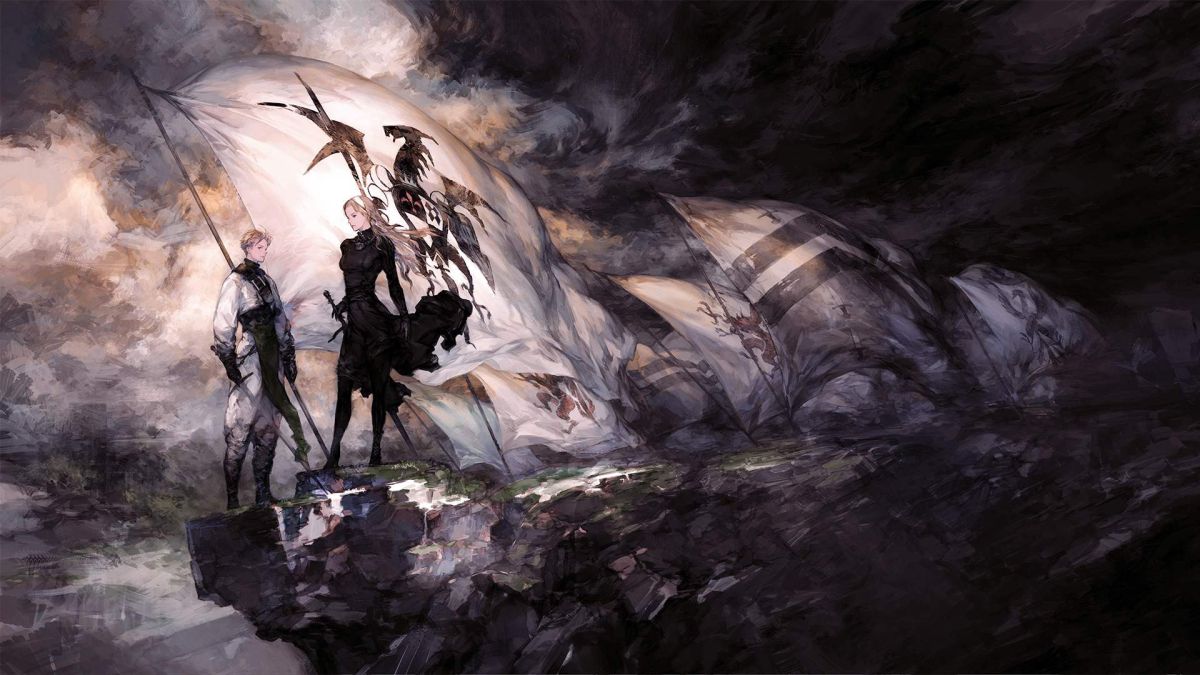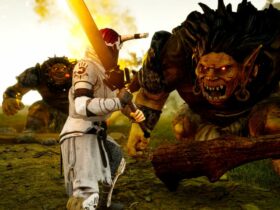Tactical Ogre: Rebirth review
⌨️
need to know
what is it? Tactical RPG classic, the originator of Final Fantasy Tactics.
release date: November 11, 2022
Expected payment: £40/$50
Developer: Square Enix
Publisher: Square Enix
Comment on: Intel Core i7-10750H, 16GB RAM, GeForce RTX 2060
multiplayer game? Do not
Association: Official website(opens in a new tab)
Square Enix’s deep dive into its archives finally has something for tactical RPG fans. No, not Final Fantasy Tactics.This other The beloved isometric game, titled Tactics, as Tactics Ogre is finally rescued from the PSP’s oblivion. It’s the best TRPG game that TRPG hipsters will tell you, and when it was ported to Sony’s handheld in 2010, it certainly got a lavish upgrade.
If you’re not familiar with the original game — it first appeared on the SNES in 1995 — it basically established the tactical role-playing game we know today, at least in its isometric configuration. Final Fantasy Tactics, Disgaea, and my beloved Vandal Hearts wouldn’t exist without a mix of solid fantasy politics and Q*bert-esque combat maps. The game also solidifies Matsuno’s family style, with the director/writer/designer continuing to work on Final Fantasy Tactics and FF12.
(Image credit: Square Enix)
Beneath the bells and whistles of later versions, it’s a simple but engaging game known for its almost Game of Thrones-esque fantasy brawls and chunky battle maps that turn the flat battlefields of its contemporaries into Gorgeous 3D diorama. Moving units and throwing arrows around the battlefield is a natural joy, and it’s still there in Tactics Ogre: Reborn, which reworked the enemy’s AI so that it’s now a fair but challenging fight . Every fight kept me on my toes and every move was thought tactically – not blindly marching across the map.
So there are more considerations than simply destroying your enemies.An early hump was a battle with a necromancer in a towering fortress, defeated skeletons could be resurrected, and only summoned more If you mess around. Your task, however, isn’t to defeat them, but to find your way through them, weathering spells that dig massive chunks out of your units’ health.
catch up
Advancing through a narrow battlefield is a challenge in itself, and I have to utilize the various abilities of all my units. Canopus, my winged angel, scrambled up the side of the fortress, taking shot therapy before retreating. Denham, my knights are equipped with the new Bulwark Aura ability from Rebirth, use it to trap enemies in place and allow my rune swordsmen to squeeze through exposed gaps. Donnalto, the priest with the requisite exorcism spell, can double-kill the skeletons, while Claudia heals his weakened body.
(Image credit: Square Enix)
It was a solid plan, and it worked in the end – when I wasn’t hindered by seemingly random stat cards that dropped as the battle progressed. These lure you into certain tiles and promise a temporary (or occasionally, permanent) stat boost. That is, if you can get to them before Reborn’s similarly stat-hungry enemies. Can you afford to spend a turn collecting that melee attack card? Or can you somehow push enemies into that debuff card? These boosts make a significant difference, but sometimes you just need to stick to your gun and focus.
After so many years, the master is still the master.
There are more complex tactical RPGs these days – if you want to be on top of system on top of system, check out the Disgaea series – but when it comes to the basics of isometric, turn-based combat , Tactics Ogre: Reborn is very good – tweaks and tactical variety. After so many years, the master is still the master.
Of course, there are a lot of bells and whistles on top of the original combat system, most of which were added in the 2010 PSP release. Most notable is the Chariot Tarot system, which is essentially a glorified undo button that lets you rewind to try different courses of action. It’s a generous mechanic that stores the last few dozen turns and allows you to seamlessly jump back to any of them from the popup menu. Try out different plans without having to save and reload endlessly, or just use it as a way to replay exciting moments.
(Image credit: Square Enix)
There’s also the World Tarot system, where you can do basically the same thing, but tell a story. Once unlocked, you can jump into branching story moments in the timeline and have characters take different paths – a game full of story divergences, where even tiny choices can affect a character’s usability.
photo cassette
A less grand but more useful feature is the ability to change the camera angle to a top-down view, which really helps provide a better overview of the battlefield in tight spaces. You can also zoom out to see more or all of the maps at once, but you’ll need to squint.You can’t rotate the scene because I don’t think it is completely Three-dimensional, but this combination of camera options works well.
You may have noticed from the screenshots that the PSP game’s crisp pixel art has been smoothed out, seemingly with a rusty trowel, as Square Enix has extended it to modern screens. Characters look eerily rounded, and background textures lose a lot of clarity and detail. Especially when you’re playing Zoom – or watching the cutscenes all the time – Reborn can be a pretty ugly game.
(Image credit: Square Enix)
The smoothing effect cannot be turned off. I checked the menu several times in disbelief. I’m not sure how good the unfiltered low-res pixel art of a PSP game would be in this case, but Reborn’s Vaseline smear compromise is disappointing. The newly blurred, smooth pixel art clashes with high-res character art and in-game menus, ultimately making the game a mess.
Thankfully, many of the other changes made for Reborn are for the better. The new ability I mentioned earlier, the Bulwark Aura skill, is part of a broader overhaul of the Tactical Ogre skill and upgrade system, now individual character upgrades rather than ranks, to better differentiate your soldiers. The intricate web of spells and abilities from previous versions has also been simplified, and all abilities now require a common resource MP to use.
Over-polishing is no longer possible thanks to the removal of random world map encounters (you can now have optional training battles) and the introduction of a level cap that steadily increases as you complete story missions.I haven’t played the PSP version so I can’t tell you if the changes are definitely for the better, but the result is a fair but challenging game, you need Tinker with characters to overcome combat – most of the time, games make this easy.
reborn again
(Image credit: Square Enix)
There are a few changes I love that can make any tactical RPG better. You can now scout the map before battle: this option gives you a glimpse of the upcoming battlefield and the location of enemies, so you can customize the composition of your army to suit you. You can also save multiple party formations in a bunch of easily replaceable quick slots, so you don’t have to tediously pop units in and out before each battle.
There are a few changes I love that can make any tactical RPG better.
Tired of fighting the first few turns when you just move units forward and wait for the enemy to do the same? Activating new AI modes – on a single unit or your entire party – tells each unit to focus on attacking, defending, ranged attacks or proper healing. Now sit back, sip your tea, and cross your fingers as the computer fights for you.
I’ve only dabbled with the AI system because there’s no way to tell my units to stomp on each other to suck up dropped treasure and attribute bonus cards, but it seems powerful enough that even one or two of you can speed up the fight considerably with any of your soldiers. dominated by themselves.
(Image credit: Square Enix)
As with the new fast-forward setting, you can double the speed of battles with the click of a button. I opened it after the first few battles and closed it for this review just to compare it. Now I need it in every tactical RPG. All it does is speed up the movement and animations, not make it look comical, but it significantly reduces the lag inherent in many tactical RPGs where we spend a lot of time just watching the animations happen.
I’ve saved the best additions for last: the new orchestral soundtrack, whose beautiful rendering of Tactics Ogre’s original score dwarfs the dirty pixel art. Music does a lot of the heavy lifting in pitching the story—the struggles of a group of friends trying to reclaim their home—as well as emphasizing the excitement and tension of the battle. An excellent English localization – carried over from the PSP game – is its perfect accompaniment, with talented voice actors bringing to life (Matsuno’s frequent collaborators) Alexander O. Smith and Joseph Reeder’s typically gorgeous script.
The ugly pixel art stuck in the middle is a shame, but it’s not enough to overshadow Reborn’s more successful, subtler changes. Sure, hardcore tactical RPG fans are on board, but if you’re curious about Japanese tactical games and wondering if Tactics Ogre: Reborn is a good place to start? Yes, God, yes. It was the granddaddy of the genre, and now it’s back to show pretenders how it’s done.
Tactical Ogre Reborn: Price Comparison
(opens in new tab) (opens in new tab) (opens in new tab) (opens in new tab)
Discover more articles in our categories Gaming & News ou encore Anime.
Thanks for visiting we hope our article Tactical Ogre: Rebirth review
, think about share the article on Facebook, instagram and whatsapp with the hashtags ☑️ #Tactical #Ogre #Rebirth #review ☑️!














Leave a Review